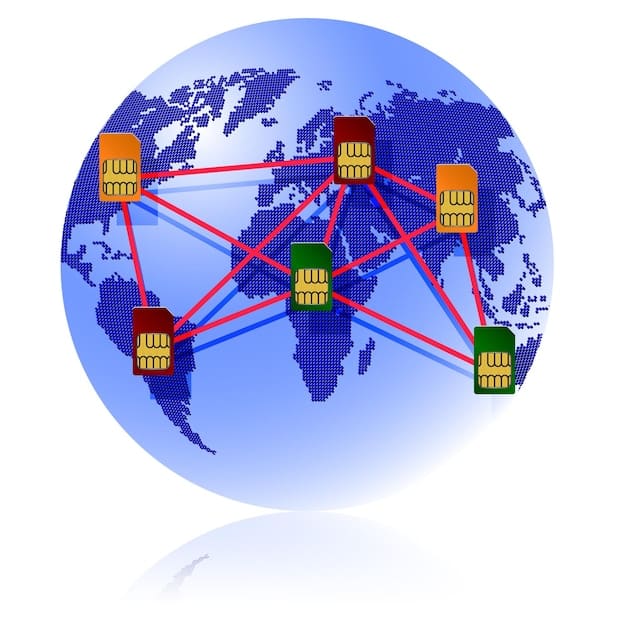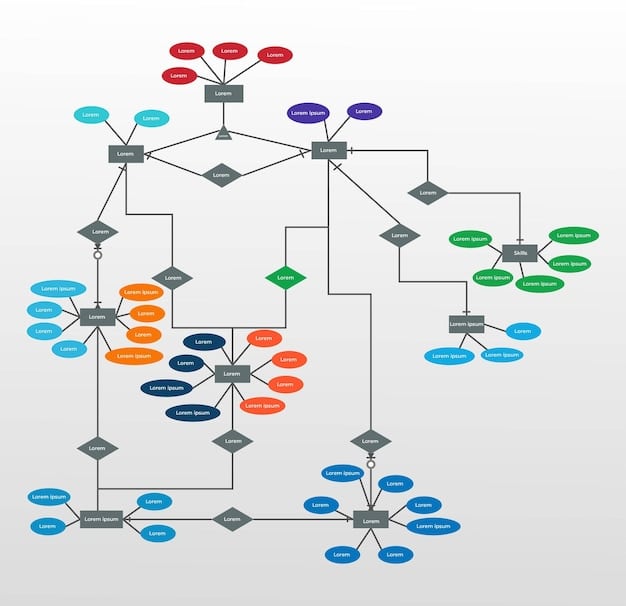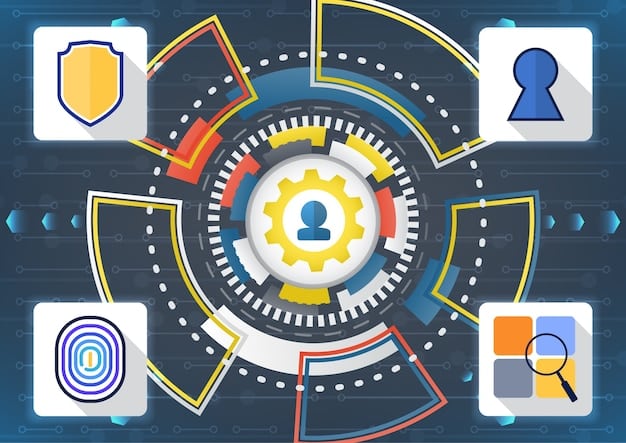Mitigating Supply Chain Vulnerabilities: A Zero-Trust Approach

Supply chain vulnerabilities arising from third-party software can be significantly mitigated by implementing zero-trust architectures, which ensure no user or device is trusted by default, enhancing overall cybersecurity posture.
The interconnected nature of modern supply chains, particularly concerning third-party software, introduces significant cybersecurity risks. Understanding and mitigating supply chain vulnerabilities is paramount. New zero-trust architectures offer a promising approach to fortifying these digital ecosystems against potential threats.
Understanding Supply Chain Vulnerabilities
Supply chain vulnerabilities refer to weaknesses within the network of suppliers, distributors, and customers that can be exploited by malicious actors to compromise an organization’s data, systems, or operations. These vulnerabilities often arise from third-party software and services integrated into the supply chain.
The increasing complexity of supply chains makes them attractive targets for cyberattacks. A single vulnerability in a third-party software component can cascade through the entire supply chain, impacting numerous organizations simultaneously.
Common Entry Points for Attacks
Hackers often target third-party vendors because they may have weaker security protocols compared to larger organizations. This provides an easier entry point into the broader supply chain network.
- Compromised Software Updates: Malicious code injected into software updates.
- Data Breaches at Third-Party Vendors: Sensitive information leaked due to poor security practices.
- Lack of Visibility: Limited oversight of third-party security practices.
Addressing these vulnerabilities requires a comprehensive and proactive cybersecurity strategy. Organizations must assess their entire supply chain and identify potential weaknesses.

The Zero-Trust Approach: A Paradigm Shift
Zero-trust is a security framework based on the principle of “never trust, always verify.” Unlike traditional security models that assume trust based on network location, zero-trust requires continuous authentication and authorization for every user and device, regardless of their location.
Implementing a zero-trust architecture involves several key components, including microsegmentation, multi-factor authentication, and continuous monitoring.
Key Principles of Zero-Trust
Zero-trust is not a single product but a security philosophy that transforms the way organizations approach cybersecurity.
- Verify Explicitly: Always authenticate and authorize based on all available data points.
- Least Privilege Access: Grant users only the access they need to perform their tasks.
- Assume Breach: Design systems with the assumption that a breach has already occurred.
By adopting these principles, organizations can significantly reduce the risk of supply chain attacks and improve their overall security posture. Zero-trust enhances visibility and control over access to sensitive resources.
Implementing Zero-Trust in Supply Chains
Implementing zero-trust in supply chains requires a multi-faceted approach that involves collaboration between organizations and their third-party vendors. This includes assessing the security posture of vendors and implementing stringent access controls.
One of the first steps is to conduct a thorough risk assessment to identify potential vulnerabilities within the supply chain and prioritize mitigation efforts.
Steps for Zero-Trust Implementation
Effective zero-trust implementation involves several concrete steps that organizations should take to secure their supply chains.
The process can be complex and requires cross-functional collaboration, but the enhanced security posture makes it worthwhile.
- Vendor Risk Assessment: Evaluate the security practices of all third-party vendors.
- Microsegmentation: Divide the network into smaller, isolated segments.
- Continuous Monitoring: Implement real-time monitoring and threat detection systems.
By meticulously examining vendor risks, segmenting their networks, and maintaining vigilant monitoring, companies can greatly reduce vulnerabilities and improve overall security within their supply chain framework.
Benefits of Zero-Trust for Supply Chains
Adopting a zero-trust architecture offers numerous advantages for organizations seeking to mitigate supply chain vulnerabilities. These benefits include reduced attack surface, improved threat detection, and enhanced compliance.
By enforcing strict access controls and continuous verification, zero-trust minimizes the potential impact of a successful cyberattack.

Improved Data Protection
Zero-trust ensures that sensitive data is protected at all times, regardless of where it resides within the supply chain. Access is strictly controlled and continuously monitored.
This helps prevent unauthorized access to confidential information and reduces the risk of data breaches.
Enhanced compliance is another key benefit, as zero-trust aligns with many regulatory requirements related to data protection and cybersecurity.
Challenges and Considerations
While zero-trust offers significant benefits, its implementation can present several challenges. These include complexity, cost, and the need for cultural change within the organization.
Organizations must carefully plan their zero-trust implementation and address these challenges to ensure success.
Overcoming Implementation Hurdles
Successfully implementing zero-trust requires careful planning, effective communication, and a commitment to continuous improvement.
- Complexity: Simplify the architecture and focus on critical assets first.
- Cost: Prioritize investments based on risk assessment and business impact.
- Cultural Change: Educate employees about the importance of zero-trust and its benefits.
Addressing these challenges proactively can pave the way for a successful zero-trust implementation, improving supply chain security and mitigating vulnerabilities.
The Future of Supply Chain Security: Zero-Trust and Beyond
The future of supply chain security will likely involve a combination of zero-trust architectures, artificial intelligence (AI), and other advanced technologies. These solutions will provide organizations with enhanced visibility, threat detection, and response capabilities.
AI-powered threat detection systems can analyze vast amounts of data and identify anomalies that may indicate a cyberattack.
Furthermore, blockchain technology can enhance transparency and traceability within the supply chain, making it more difficult for malicious actors to tamper with data or products.
| Key Point | Brief Description |
|---|---|
| 🛡️ Zero-Trust Architecture | Security model with the ‘never trust, always verify’ principle. |
| 🔍 Vendor Risk Assessment | Evaluation of third-party vendor security practices. |
| 🔒 Microsegmentation | Network division into smaller, isolated segments to limit breach impacts. |
| 🤖 AI Threat Detection | Using artificial intelligence to identify and respond to threats in real time. |
Frequently Asked Questions
Supply chain vulnerabilities are weaknesses in the network of suppliers, distributors, and customers that can be exploited to compromise data and systems. They often stem from third-party software.
Zero-trust operates on the principle of “never trust, always verify.” It requires continuous authentication and authorization for every user and device, regardless of location.
Key benefits include reduced attack surface, improved threat detection, enhanced data protection, and better compliance with data protection regulations.
Challenges include complexity, high implementation costs, and the need for significant cultural changes within the organization, requiring comprehensive planning and buy-in.
AI can analyze vast data amounts to identify anomalies, predict potential threats, and automate responses, significantly improving real-time threat detection and management.
Conclusion
Mitigating supply chain vulnerabilities through the implementation of zero-trust architectures offers a robust defense against evolving cybersecurity threats. By embracing the principles of continuous verification and least privilege access, organizations can fortify their digital ecosystems and safeguard sensitive data in an increasingly interconnected world.





